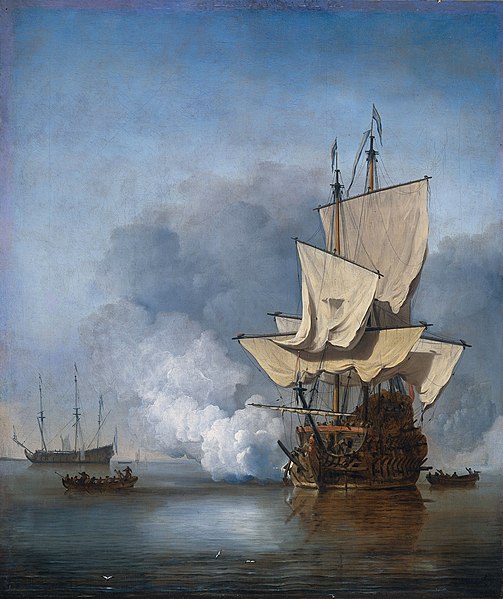Naval artillery in the Age of Sail
Naval artillery in the Age of Sail encompasses the period of roughly 1571–1862: when large, sail-powered wooden naval warships dominated the high seas, mounting a large variety of types and sizes of cannon as their main armament. By modern standards, these cannon were extremely inefficient, difficult to load, and short ranged. These characteristics, along with the handling and seamanship of the ships that mounted them, defined the environment in which the naval tactics in the Age of Sail developed.
The cannon shot (c. 1680), painted by Willem van de Velde the Younger
Firing of an 18-pounder aboard a French ship
36-pounder long gun at the ready. The pointing system and accessories can be seen clearly
A Paixhans gun.
The Age of Sail is a period that lasted at the latest from the mid-16th to the mid-19th centuries, in which the dominance of sailing ships in global trade and warfare culminated, particularly marked by the introduction of naval artillery, and ultimately reached its highest extent at the advent of the analogue Age of Steam. Enabled by the advances of the related Age of Navigation, it is identified as a distinctive element of the early modern period and the Age of Discovery. Especially in context of the latter, it refers to a more particular Eurocentric Age of Sail, while generally the Age of Sail is the culminating period of a long intercontinental history of sailing.
The Battle of Scheveningen, 10 August 1653, painted by Jan Abrahamsz Beerstraaten
A ship of war, Cyclopaedia 1728, Vol 2
HMS Devastation







